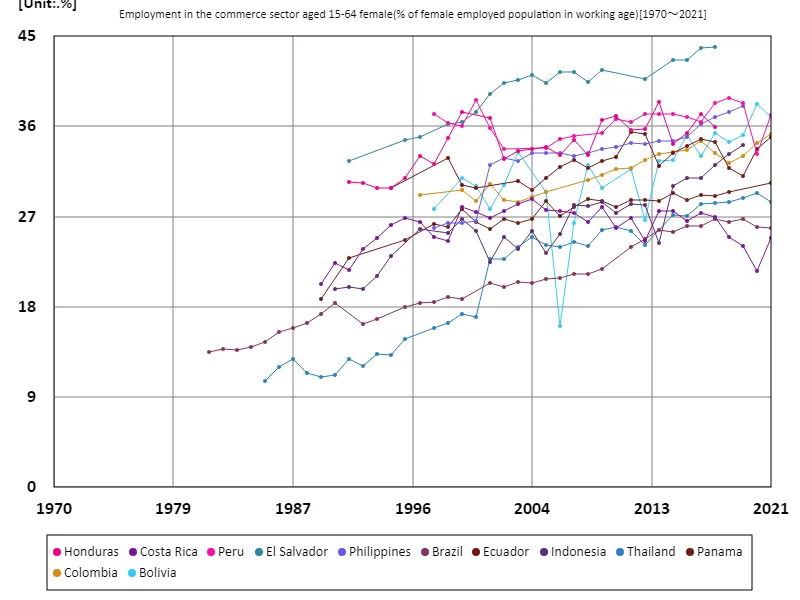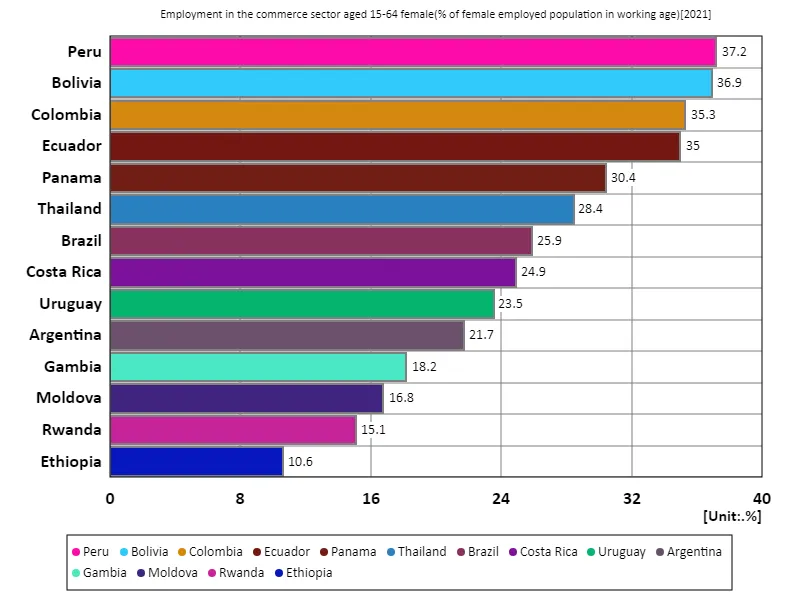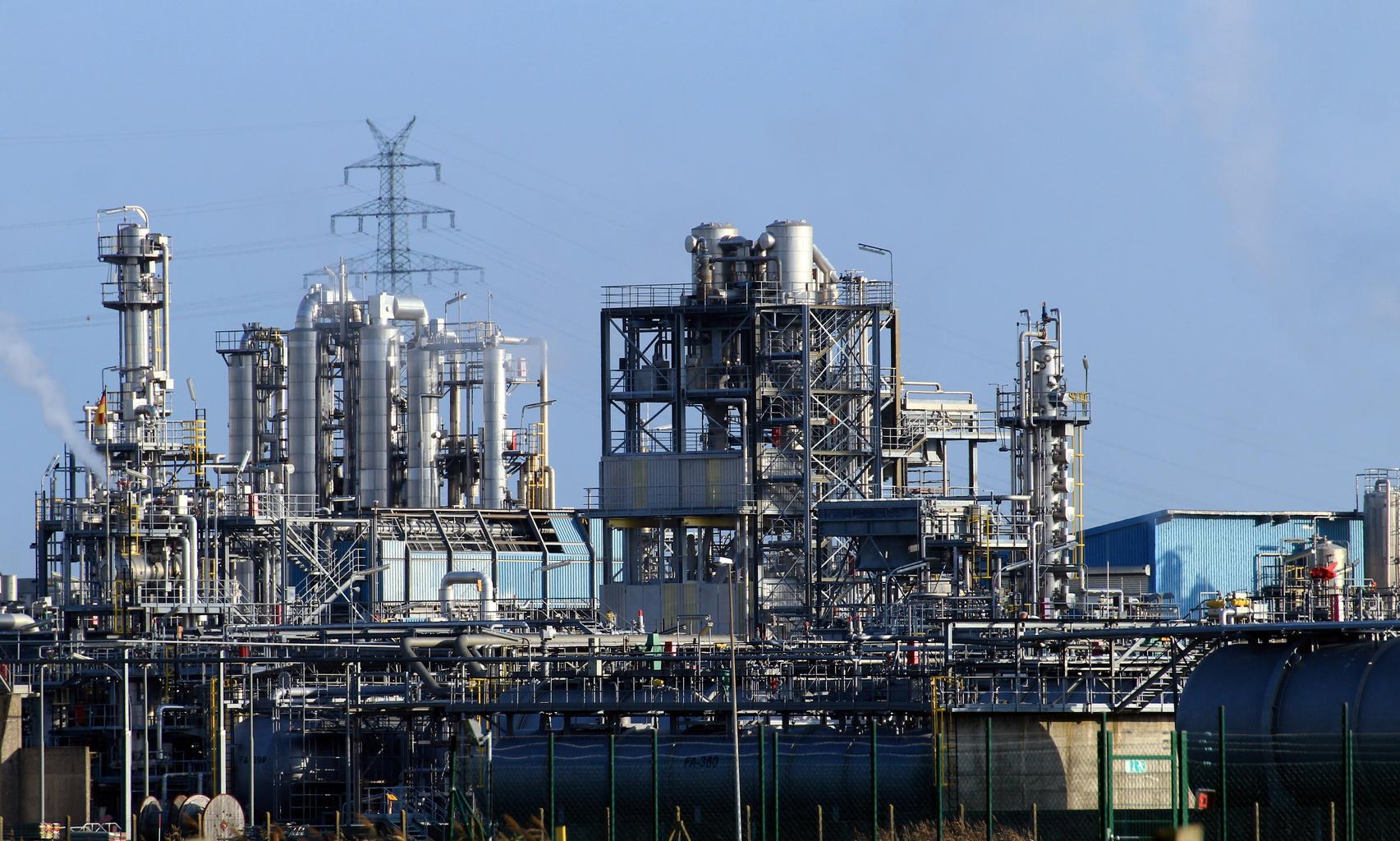- Abstract
- Employment rate in the trade sector for women aged 15-64 (percentage of working-age female employment in the workforce)
- Employment rate in the trade sector for women aged 15-64 (percentage of working-age female employment population) (Worldwide)
- Employment rate in the trade sector for women aged 15-64 (percentage of working-age female employment in the labour force) (Worldwide, latest year)
- Reference
Abstract
In recent decades, women’s participation in the workforce has steadily increased globally, with notable regional variations. In countries like Peru, the commercial sector has seen higher female employment rates, reaching 37.2% in 2021. This trend reflects broader economic shifts, such as urbanization and the growth of service industries, which often offer more opportunities for women. Historically, women in Latin America have faced challenges like lower wages and limited job options, but increasing access to education and changing social norms are contributing to gradual improvements in employment rates.
Employment rate in the trade sector for women aged 15-64 (percentage of working-age female employment in the workforce)
Between 1981 and 2021, women’s employment in the trade sector has evolved significantly, with El Salvador reaching a peak of 43.9% in 2017, maintaining this level. This increase reflects broader economic changes, such as expanding service and retail industries, which provide more opportunities for women. While the trend has been positive in several countries, challenges like gender inequality in wages and job types persist. In many developing nations, women in the trade sector often face informal or low-wage employment, but education and policy improvements are driving more equitable access to opportunities.


The maximum is the latest one, 43.9% of El Salvador
Employment rate in the trade sector for women aged 15-64 (percentage of working-age female employment population) (Worldwide)
From 1981 to 2021, women’s employment in the trade sector has seen significant shifts globally. Uruguay’s peak of 45.3% in 1998, now at 52% of that rate, highlights a period of strong growth followed by a decline in recent years. This decline could reflect factors like economic fluctuations and the rise of informal labor markets. Despite this, the trade sector remains a crucial source of employment for women, especially in Latin America. Over time, women’s increasing access to education and labor market participation has fostered more opportunities, although challenges in wage equality and job security persist.


The maximum is 45.3%[1998] of Uruguay, and the current value is about 52%
Employment rate in the trade sector for women aged 15-64 (percentage of working-age female employment in the labour force) (Worldwide, latest year)
In 2021, Peru recorded the highest employment rate for women in the trade sector at 37.2%, significantly above the global average of 25.7%. This highlights the increasing role of women in trade, particularly in Latin America, where economic shifts have expanded opportunities in services and retail. The total of 360% suggests a cumulative growth over multiple years, with many countries experiencing gradual improvements in female labor force participation. However, women often remain concentrated in lower-paying, informal jobs within the sector, reflecting ongoing challenges in achieving full gender equity in the workforce.今のところ、この会話は役に立ちましたか?


The maximum is 37.2% of Peru, the average is 25.7%, and the total is 360%



Comments